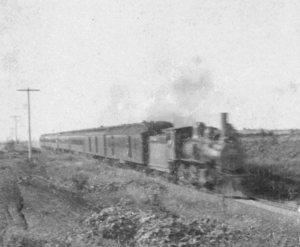Back in Time
Frisco, Texas got its start from hardy pioneers who helped settle one of America’s newest states: Texas, admitted to the Union in 1845.
Most families who came to the north Texas prairie followed the Preston Trail (today’s Preston Road), a road that began as an Indian footpath from the Red River south to Austin. Later, the road was known as the Shawnee Trail upon which millions of longhorn cattle were driven to markets in the north. The trail followed a high ridge of white rock that provided a dry path for the cattle. A Texas State Historic Marker about the Shawnee Trail is located at Collin College’s Frisco Campus.
Other historic sites have been identified, researched and marked by the Heritage Association of Frisco including some of the small communities that sprang up in the mid-to-late 1800s. They served a population of farmers and ranchers who made certain there were schools and churches for their families to attend. However, most of these villages experienced a similar fate around the turn of the nineteenth century when the St. Louis – San Francisco Railway Company laid tracks through north central Texas.
The railroad company determined that current day Frisco was the perfect location for its track since rainwater running off Preston Ridge would help fill the man-made lake that serviced the steam engine. People from other communities moved their businesses and homes to be near the railroad, and as surrounding villages declined, the town of Frisco was grew.
In an auction that took place on February 6 and 7, 1902, lots were sold for residential as well as commercial development of Frisco. Many of these locations have received markers because of their historical significance to Frisco.
Frisco remained an agricultural center for decades, boasting 5 cotton gins at one time. The population remained below 2,000 residents until a growth spurt in the 1980s portended of what was to come. By 1990, Frisco’s location, its quality of life and visionary leadership contributed to its becoming the fastest growing city in the nation with a population of about 120,000 in 2011. Today in 2016, Frisco’s population is over 150,000.
The Heritage Association of Frisco, Inc. is committed to marking historic sites and hopes you will use our Historic Sites Map to enjoy a driving or walking tour that will take you back in time.

